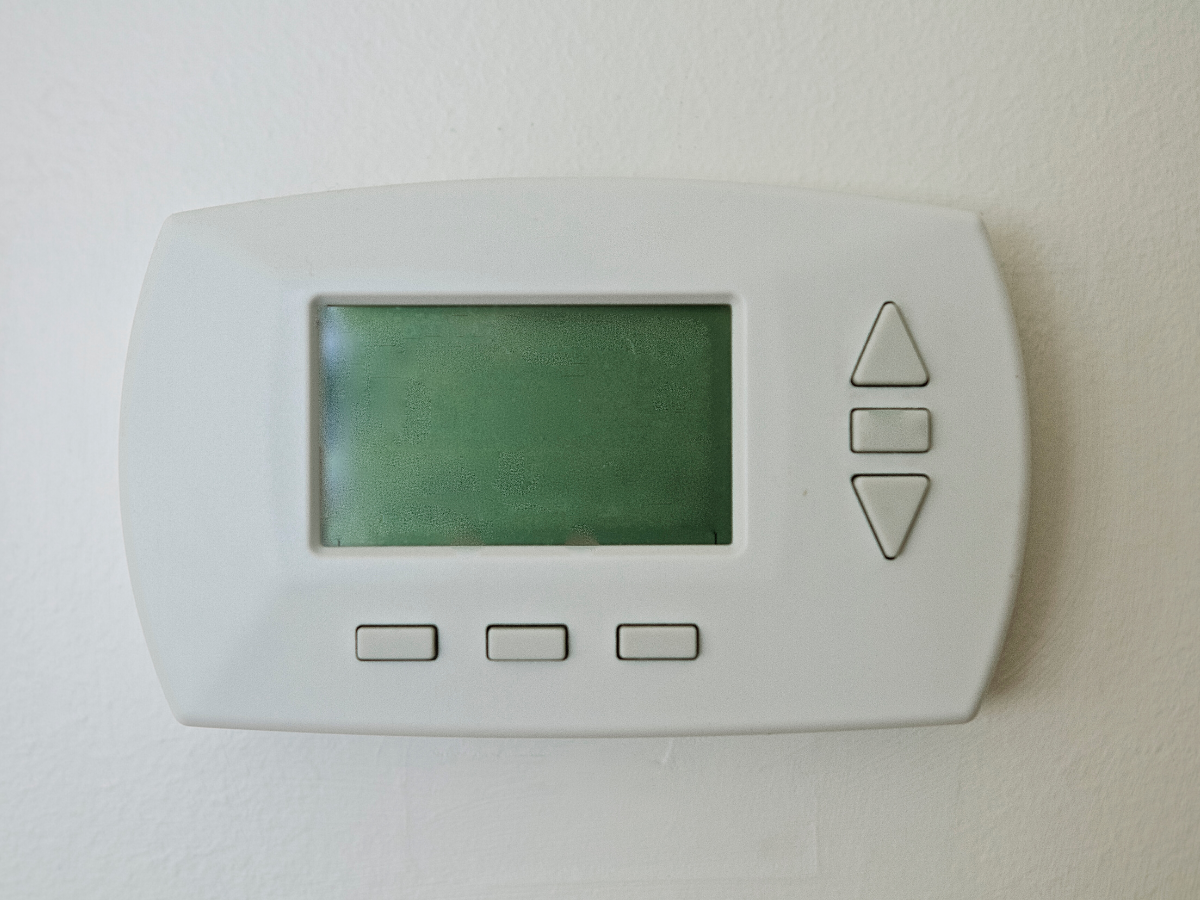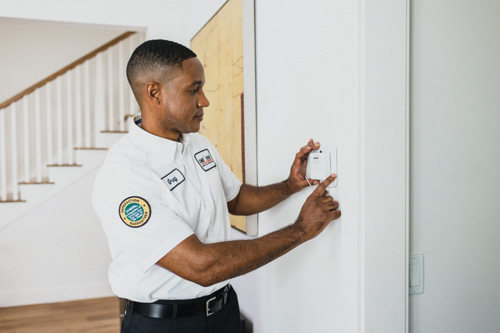 Whether temperatures outside are hot or cold, a properly functioning thermostat plays a pivotal role in keeping temperatures inside your home comfortable. That’s because it monitors the home’s ambient temperature and turns the heating, ventilation, and air conditioning (HVAC) system on and off as needed.
Whether temperatures outside are hot or cold, a properly functioning thermostat plays a pivotal role in keeping temperatures inside your home comfortable. That’s because it monitors the home’s ambient temperature and turns the heating, ventilation, and air conditioning (HVAC) system on and off as needed.
For this reason, the thermostat is one of the first things an HVAC technician will inspect when a homeowner mentions that their HVAC system is either not turning on or adequately cooling or warming their home.
Multiple studies show that malfunctioning or broken thermostats are often to blame when an HVAC system short cycles or runs non-stop, both of which are events that can lead to increased energy consumption, uneven temperature distribution, premature failure of the system, and costly repairs.
But there is some good news. Many of the HVAC problems that arise from a poorly functioning or broken thermostat can be ameliorated or even avoided by fixing or replacing it. Of course, that requires recognizing the telltale signs of a bad thermostat.
The Average Lifespan of an HVAC Thermostat
Before delving into the telltale signs of a bad thermostat, let’s first discuss their average lifespan and the factors that can contribute to them failing prematurely. Whether a thermostat is programmable or non-programmable is one of the first things that dictate how long a new thermostat will last.
According to an article published by Angi, a trusted online home services contractor marketplace, the average programmable thermostat currently on the market, including smart thermostats, can last up to 10 years. Their non-programmable counterparts, meanwhile, typically last up to 35 years.
Several things can, however, reduce the lifespan of both programmable and non-programmable thermostats. Some of the most common include power surges, mechanical wear and tear, corrosion, dust buildup, faulty wiring, loose connections, and overheating. These various issues can decrease the efficiency of the rest of the home’s HVAC system and cause it to consume more energy than it otherwise would, which leads to higher-than-usual utility bills.
Keeping Your Home Comfortable: The 7 Most Common Signs of a Malfunctioning or Broken Thermostat
A malfunctioning or broken thermostat can increase annual energy costs by as much as 12% for homeowners. That spike in energy costs is one of the first telling signs of a thermostat problem or outright failure.
Along with higher utility bills, other signs of a thermostat problem can include the following:
- No signs of power – A blank or unresponsive display is a common sign of a thermostat failure. Both can be a byproduct of dead batteries, malfunctioning components, or a tripped circuit breaker if the thermostat runs on the home’s electricity.
- The HVAC system does not turn on – Most people immediately conclude that something is seriously wrong when their HVAC system fails to turn on. But more often than not, the issue is nothing more than a malfunctioning or broken thermostat. Common thermostat problems that can prevent an HVAC system from turning on include faulty wiring, dirt accumulation that negatively affects sensor accuracy, internal component failures, and software glitches.
- The HVAC system does not power off – When an HVAC system keeps running after reaching a set temperature on a thermostat, it could indicate that the thermostat is in auto mode, which causes the HVAC fan to circulate air throughout the home continuously. Setting the thermostat fan to “on” ensures that the HVAC fan only turns on when the air conditioning or heating is on.
- Thermostat requires recalibration -When an HVAC system keeps running after reaching a set temperature on a thermostat, it could indicate that a recalibration is needed. Recalibrating a thermostat involves using a small screwdriver to adjust a calibration screw or a calibration dial inside the thermostat housing.
- The HVAC system is short-cycling – For those unfamiliar with it, short cycling refers to when an HVAC system runs for a short time and immediately shuts off. Along with dirty air filters and low refrigerant, a malfunctioning or broken thermostat is an issue that commonly causes HVAC systems to short cycle.
- Lost programmed settings – A properly functioning thermostat should be able to retain the date, temperature settings, time-of-day schedules for heating and cooling, and the like. If it fails to maintain this information, it could indicate that the thermostat needs to be fixed or replaced.
- Indoor temperatures and thermostat settings not matching – When the thermostat temperature setting doesn’t match the inside temperature of a home, it could indicate a problem with the temperature sensor signals in the thermostat. According to HVAC technicians in Tampa and throughout the Greater Tampa Bay area, damaged or worn sensors can cause temperatures on a thermostat to appear higher or lower than the actual temperatures inside a home.
How To Fix Thermostat Problems
 While resolving most HVAC thermostat problems will require the expertise of a licensed HVAC technician, there are some that homeowners can take care of themselves.
While resolving most HVAC thermostat problems will require the expertise of a licensed HVAC technician, there are some that homeowners can take care of themselves.
Some of these include the following:
- Ensuring that all wires housed in the thermostat are firmly and correctly connected
- Gently removing any dust buildup that may have accumulated on thermostat components
- Inspecting thermostat settings and making sure they are correctly programmed
- Replacing worn or dead batteries
- Resetting the circuit breaker if the thermostat running on the home’s electricity tripped a circuit
When Should You Consider Replacing or Upgrading Your Thermostat?
 If you haven’t noticed improvements in how your HVAC system operates or if it fails to turn on or off after implementing the do-it-yourself fixes detailed in this article, you should consider replacing it. Likewise, if you have a standard, non-programmable thermostat, you might want to upgrade to a programmable or smart thermostat to get the most out of your HVAC system.
If you haven’t noticed improvements in how your HVAC system operates or if it fails to turn on or off after implementing the do-it-yourself fixes detailed in this article, you should consider replacing it. Likewise, if you have a standard, non-programmable thermostat, you might want to upgrade to a programmable or smart thermostat to get the most out of your HVAC system.
Programmable thermostats offer maintenance reminders, precise temperature controls, and customizable schedules. These features contribute to optimized HVAC operation, improved energy efficiency, and lower utility bills. Meanwhile, smart thermostats provide Wi-Fi connectivity, remote access, and integration with most smart home systems. And this is in addition to many of the same features found on programmable thermostats.
To learn more or to schedule service, consider speaking with a One Hour Air Conditioning & Heating associate today.